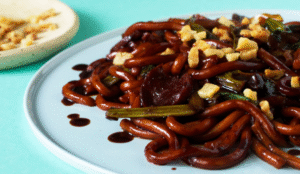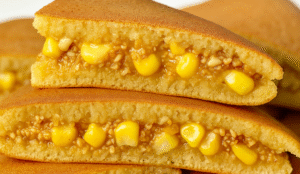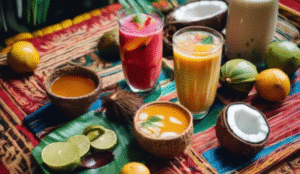Deliciously Malaysian Popiah: Malaysia’s Timeless Street Food Treasure
When you think about Malaysian street food, images of sizzling satay, steaming nasi lemak wrapped in banana leaves, and fragrant char kuey teow often come to mind. But tucked within this kaleidoscope of flavors is a dish that’s both simple and deeply satisfying: Malaysian popiah.
Popiah, a fresh spring roll wrapped in thin crepes filled with a medley of vegetables and sometimes meat, is one of Malaysia’s most beloved street food treasures. Light yet hearty, humble yet versatile, it’s a dish that carries centuries of cultural exchange and culinary adaptation. For locals, Malaysian popiah isn’t just food—it’s comfort, nostalgia, and a shared experience across generations. For visitors, it’s often a surprising discovery: a roll that may look ordinary but bursts with taste and texture in every bite.
In this article, we’ll journey into the history, culture, preparation, and irresistible charm of Malaysian popiah. From its origins to the modern street stalls, from family gatherings to festive occasions, we’ll uncover why this humble roll continues to be cherished as Malaysia’s timeless street food treasure.
Frequently Asked Questions (FAQ)
1. What is popiah in Malaysia?
Popiah in Malaysia is a type of fresh spring roll made with a thin crepe-like skin filled with shredded vegetables, bean sprouts, tofu, egg, and sometimes meat or seafood. It’s soft, light, and often eaten as a snack or part of a meal.
2. What is the significance of popiah?
Popiah is significant because it reflects community, sharing, and cultural fusion. Traditionally, families and friends gather to prepare and roll popiah together, especially during celebrations. It’s not just food—it’s a way to connect people.
3. What's in a popiah?
A popiah usually contains a mix of shredded jicama (sengkuang), carrots, bean sprouts, lettuce, egg, tofu, and sometimes minced meat or prawns. The fillings are seasoned with sauces like hoisin or chili paste, then wrapped in a thin flour skin.
4. Is popiah Malaysian or Singaporean?
Popiah is part of both Malaysian and Singaporean food culture, as it originally came from Southern China and spread across Southeast Asia. In Malaysia, it has unique local flavors with sambal and extra fillings, making it distinctly Malaysian while still shared regionally.
5. Is popiah healthy or not?
Popiah can be quite healthy because it’s packed with fresh vegetables and uses very little oil, especially in the fresh (non-fried) version. However, fried popiah or versions with lots of sauces can be heavier in calories. Overall, fresh popiah is considered a nutritious snack.
The Origins of Popiah: A Culinary Migration
The story of Malaysian popiah begins long before it was served in bustling night markets or roadside stalls. Popiah originated in Fujian, China, where it was known as a fresh spring roll. It was typically enjoyed during the Qingming Festival, a time for ancestor worship and family reunions. Migrants from southern China carried this tradition with them across Southeast Asia, adapting the dish to the flavors, ingredients, and tastes of their new homes.
In Malaysia, the multicultural environment gave popiah a new life. With influences from Chinese, Malay, and Peranakan (Straits Chinese) communities, Malaysian popiah evolved into something distinct. It retained its Fujianese roots yet embraced local flavors—adding chili sauces, sambal, or even sweetened soy to give it that unmistakable Malaysian punch. Today, it’s enjoyed across Penang, Melaka, Johor, and Kuala Lumpur, with each region adding its own flair.
Why Malaysian Popiah is Unique
What sets Malaysian popiah apart from other regional variations, such as the versions found in Singapore, Thailand, or Taiwan? The answer lies in its balance of flavors and textures.
- The skin (popiah wrapper): Unlike Vietnamese rice paper or thicker Chinese pancakes, Malaysian popiah uses a soft, thin crepe made from wheat flour. It’s delicate yet pliable, holding the generous fillings without breaking.
- The fillings: At the heart of every roll lies a slow-braised jicama (yam bean), stir-fried with carrots, bean sprouts, and sometimes minced meat or prawns. Flavors are layered with garlic, soy sauce, and pepper, resulting in a savory yet slightly sweet profile.
- The condiments: Local chili paste, sweet hoisin-like sauce, and crushed peanuts elevate the taste. These condiments are what give Malaysian popiah its street-food magic—sweet, spicy, nutty, and tangy all at once.
- The presentation: In Malaysia, popiah is often cut into bite-sized rounds and served neatly on a plate, making it perfect for sharing.
This careful harmony makes Malaysian popiah both light and filling, simple yet bursting with character. It’s a roll you can enjoy as a snack, a quick lunch, or even a party dish.
Popiah in Malaysian Culture
Food in Malaysia is rarely just about eating—it’s about tradition, family, and community. Malaysian popiah carries deep cultural meaning, often tied to gatherings and celebrations.
- Family bonding: Many households still prepare popiah together. Rolling them is an act of togetherness, with each family member contributing to chopping, frying, or wrapping.
- Festive occasions: During Chinese New Year, Hari Raya gatherings, or casual family reunions, Malaysian popiah often appears as a light yet symbolic dish of unity.
- Street food culture: Walk into a pasar malam (night market), and you’ll often find popiah stalls with queues forming. The roll is affordable, portable, and endlessly customizable—everything Malaysian street food represents.
This versatility makes Malaysian popiah more than just food. It’s a social connector, a bridge across generations, and a delicious reminder of Malaysia’s multicultural identity.
The Anatomy of a Perfect Popiah
Let’s break down what makes a truly irresistible Malaysian popiah:
- The Wrapper
The popiah skin is a delicate work of art. Skilled vendors make it fresh by spreading thin batter on a hot pan in quick, circular motions. The result? A soft, almost translucent crepe that holds everything together. - The Filling
The star of the filling is jicama, braised until tender but not mushy. Carrots, French beans, cabbage, and bean sprouts add crunch. Some versions include lap cheong (Chinese sausage), prawns, or minced chicken. - The Condiments
A swipe of sweet sauce, chili paste, and sometimes garlic paste coats the wrapper before the filling is added. Crushed peanuts and fried shallots add fragrance and crunch. - The Roll
Rolled tightly, then sliced into bite-sized pieces, Malaysian popiah is best eaten immediately—when the wrapper is still soft, and the filling retains its balance of juicy and crunchy.
Variations Across Malaysia
Like many Malaysian dishes, popiah isn’t confined to a single recipe. Every region—and even every stall—has its own interpretation of Malaysian popiah.
- Penang Popiah: Known for being juicier, often with more sauce and fillings that practically melt in your mouth.
- Melaka Popiah: Influenced by Peranakan cuisine, it may include eggs, pork lard, or spicy sambal.
- Johor Popiah: Often more robust, with stronger garlic flavors and heavier fillings.
- Kuala Lumpur Street Popiah: Typically cleaner rolls, neatly cut, balancing crunch and flavor for city crowds.
Each variation tells a story of migration, adaptation, and local taste buds shaping the dish.
Making Popiah at Home
While enjoying popiah at a night market is a must for any visitor, making it at home offers a deeper appreciation of its craft. Many families pass down the Traditional Popiah recipe, ensuring the dish stays alive across generations.
Here’s what typically goes into a home-prepared Traditional Popiah recipe:
- Popiah wrappers (store-bought or homemade)
- Jicama, shredded
- Carrots, shredded
- Garlic, chopped
- Bean sprouts
- Optional proteins: prawns, minced chicken, or lap cheong
- Condiments: sweet sauce, chili paste, crushed peanuts, fried shallots
The preparation involves braising the jicama and carrots with garlic and seasoning until tender. Once cooled, the fillings are wrapped with condiments into thin popiah skin and rolled tight. The beauty of a Traditional Popiah recipe lies in its flexibility—you can adjust fillings and condiments to suit family tastes, while still staying true to its roots.
Popiah vs. Other Malaysian Rolls
Malaysia has many kinds of rolls—spring rolls, kuih rolls, and even stuffed pancakes. Yet, Malaysian popiah stands out for being:
- Healthier: Unlike deep-fried spring rolls, popiah is fresh, light, and lower in oil.
- Customizable: You can keep it vegetarian, or add proteins for a heartier meal.
- Everyday-friendly: Affordable and easy to prepare in bulk, making it perfect for family gatherings.
It’s no wonder that Malaysian popiah continues to be a go-to choice for both locals and tourists exploring Malaysian food.
Popiah as a Street Food Experience
For visitors exploring Malaysian food culture, Malaysian popiah is often a delightful surprise. Unlike the heavier fried snacks, it offers a lighter yet flavorful alternative. It’s also deeply tied to the country’s cultural identity, making it more than just a roll—it’s a taste of history, migration, and community.
Whether you’re in Penang’s George Town, Melaka’s Jonker Street, or Kuala Lumpur’s bustling markets, seeking out a stall that serves Malaysian popiah is an absolute must.
The Timelessness of Malaysian Popiah
So why has Malaysian popiah endured through centuries, transcending cultures and adapting to countless tastes? The answer is simple: versatility and community. It’s a dish that evolves without losing its essence, one that brings people together, and one that satisfies without overwhelming.
From its humble Chinese origins to its vibrant presence in Malaysian street food culture today, Malaysian popiah remains a timeless treasure—a roll that continues to inspire nostalgia, togetherness, and joy.
Final Thoughts
Food trends come and go, but some dishes stand the test of time. Malaysian popiah is one such dish. It may not scream for attention like char kuey teow or nasi lemak, but its quiet charm lies in its ability to comfort, connect, and celebrate Malaysia’s multicultural heritage.
Next time you’re wandering through a night market, don’t overlook this humble roll. Take a bite of Malaysian popiah—and taste the layers of history, culture, and love rolled into one timeless treasure.





